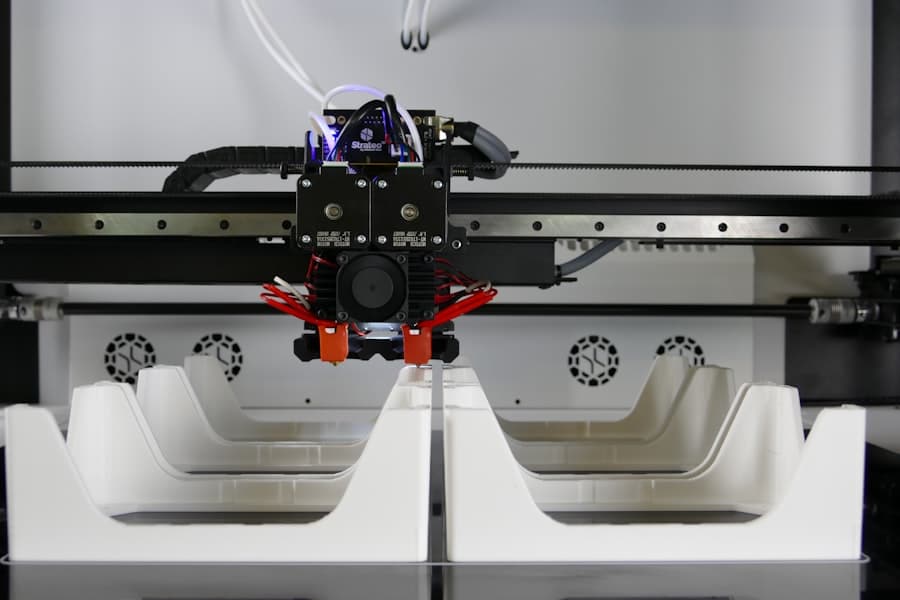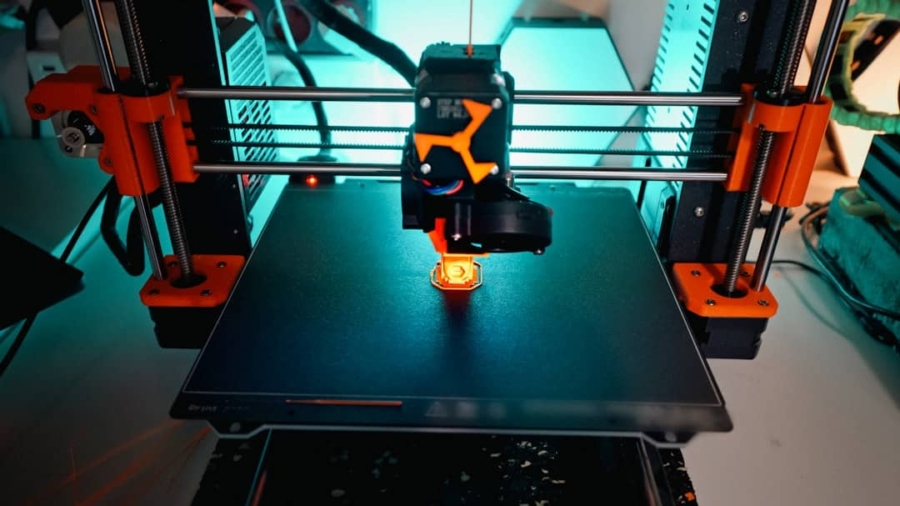3D bioprinting represents a revolutionary intersection of biotechnology and additive manufacturing, where living cells and biomaterials are precisely deposited layer by layer to create complex tissue structures. This innovative technology has emerged as a promising solution to some of the most pressing challenges in medicine, particularly in the field of organ transplantation. By utilizing bioinks—substances that contain living cells and other biological materials—scientists can fabricate tissues that mimic the architecture and functionality of natural organs.
The potential applications of 3D bioprinting extend beyond mere organ creation; they encompass drug testing, disease modeling, and regenerative medicine, making it a multifaceted tool in modern healthcare. The advent of 3D bioprinting has been fueled by advancements in materials science, computer-aided design, and cellular biology. Researchers are now able to design intricate structures that replicate the microenvironment of human tissues, which is crucial for cell survival and function.
This technology not only holds the promise of alleviating the organ shortage crisis but also offers a pathway to personalized medicine, where organs can be tailored to the specific genetic makeup of individual patients. As we delve deeper into the implications of 3D bioprinting for organ transplants, it becomes evident that this technology could redefine the landscape of transplantation and regenerative medicine.
Key Takeaways
- 3D bioprinting is a revolutionary technology that allows for the creation of 3D structures using living cells.
- 3D bioprinting has the potential to significantly impact organ transplants by addressing the shortage of donor organs and reducing the risk of rejection.
- The advantages of 3D bioprinting in organ transplantation include personalized organ production, reduced waiting times, and the ability to create complex organ structures.
- Challenges and limitations of 3D bioprinting in organ transplants include the need for further research, regulatory hurdles, and the high cost of technology.
- Ethical considerations in 3D bioprinting for organ transplants include issues related to consent, equity in access, and the potential commodification of organs.
The Impact of 3D Bioprinting on Organ Transplants
The impact of 3D bioprinting on organ transplants is profound, addressing critical issues such as organ scarcity and transplant rejection. Currently, thousands of patients await organ transplants, with many succumbing to their conditions while on waiting lists. Traditional organ donation systems are limited by factors such as donor availability, compatibility, and the risk of rejection.
3D bioprinting offers a potential solution by enabling the production of organs that are not only biocompatible but also customized to match the recipient’s biological profile. This could significantly reduce the incidence of transplant rejection, a major hurdle in current transplantation practices. Moreover, 3D bioprinting allows for the creation of organs with complex vascular networks, which are essential for sustaining larger tissues and organs.
The ability to print these intricate structures means that future bioprinted organs could be more functional and viable than those created through traditional methods. For instance, researchers have successfully bioprinted simpler structures like skin and cartilage, paving the way for more complex organs such as kidneys and livers. The implications for patient outcomes are substantial; with a reliable supply of bioprinted organs, patients could receive transplants more quickly, leading to improved survival rates and quality of life.
Advantages of 3D Bioprinting in Organ Transplantation

One of the most significant advantages of 3D bioprinting in organ transplantation is its potential to eliminate the issue of organ rejection. By using a patient’s own cells to create an organ, the risk of immune response is drastically reduced. This personalized approach not only enhances compatibility but also minimizes the need for lifelong immunosuppressive therapy, which can have severe side effects.
The ability to create organs on demand could revolutionize transplant medicine by providing a sustainable solution to the chronic shortage of donor organs. Additionally, 3D bioprinting allows for unprecedented precision in organ design. Researchers can manipulate the architecture at a micro-level, ensuring that the printed tissues closely resemble their natural counterparts in terms of structure and function.
Furthermore, bioprinted organs can be designed with specific features tailored to individual patients’ needs, such as varying levels of porosity or specific cellular compositions that enhance performance or healing.
Challenges and Limitations of 3D Bioprinting in Organ Transplants
Despite its promising potential, 3D bioprinting faces several challenges and limitations that must be addressed before it can be widely adopted in clinical settings. One major hurdle is the complexity involved in replicating the intricate architecture of human organs. While researchers have made strides in printing simpler tissues, creating fully functional organs with all necessary components—such as blood vessels, nerves, and connective tissues—remains a formidable challenge.
Another significant limitation is the current state of bioink development. While various materials have been explored for use as bioinks, finding substances that provide both structural integrity and biological functionality is an ongoing challenge.
The ideal bioink must support cell viability during and after the printing process while also promoting tissue maturation and integration once implanted. Additionally, regulatory hurdles pose another challenge; as 3D bioprinted organs are considered advanced therapies, they must undergo rigorous testing and approval processes before they can be used in patients.
Ethical Considerations in 3D Bioprinting for Organ Transplants
The ethical landscape surrounding 3D bioprinting for organ transplants is complex and multifaceted. One primary concern is related to equity in access to this technology. As with many advanced medical technologies, there is a risk that 3D bioprinting could exacerbate existing disparities in healthcare access.
If only certain populations or individuals can afford or access these innovations, it could lead to a two-tiered system where wealthier patients receive better care while others remain reliant on traditional organ donation systems. Furthermore, ethical questions arise regarding consent and ownership of biological materials used in bioprinting. When using a patient’s cells for organ creation, issues related to informed consent become paramount.
Patients must fully understand how their cells will be used and any potential risks involved in the process. Additionally, as bioprinting technology advances, questions about intellectual property rights over printed organs may emerge, complicating the landscape further.
Current Applications of 3D Bioprinting in Organ Transplants

Currently, 3D bioprinting has found applications primarily in research settings rather than widespread clinical use. One notable example is the development of bioprinted skin grafts for burn victims or patients with chronic wounds. These grafts have shown promise in promoting healing while reducing the risk of infection compared to traditional methods.
Researchers have also successfully printed cartilage for joint repair, demonstrating the potential for bioprinted tissues to address orthopedic issues. In terms of organ transplantation specifically, several research teams are working on creating simpler organ models as precursors to more complex structures. For instance, scientists have made significant progress in bioprinting liver tissues that can mimic some functions of a natural liver, which could serve as valuable tools for drug testing and disease modeling before moving on to full organ creation.
These advancements not only highlight the versatility of 3D bioprinting but also underscore its potential role in bridging gaps in current medical practices.
Future Possibilities and Innovations in 3D Bioprinting for Organ Transplants
The future possibilities for 3D bioprinting in organ transplantation are vast and exciting. As technology continues to evolve, researchers are exploring new materials and techniques that could enhance the capabilities of bioprinting. Innovations such as using stem cells as bioinks could lead to more versatile tissue types that can differentiate into various cell types needed for complex organs.
Additionally, advancements in imaging technologies may allow for more accurate modeling of patient-specific anatomy, leading to even more personalized organ designs. Moreover, integrating artificial intelligence (AI) into the design process could streamline the creation of bioprinted organs by optimizing parameters such as cell density and arrangement based on predictive models. This synergy between AI and bioprinting could accelerate research timelines and improve outcomes for patients awaiting transplants.
As these technologies converge, we may witness a new era where organ transplantation becomes not only more efficient but also more effective at meeting patient needs.
Conclusion and Implications for the Future of Organ Transplantation
The implications of 3D bioprinting for the future of organ transplantation are profound and far-reaching. As researchers continue to overcome existing challenges and refine their techniques, we may soon see a paradigm shift in how we approach organ replacement therapies. The potential to create fully functional organs tailored to individual patients could alleviate many issues associated with traditional transplantation methods, including donor shortages and rejection rates.
As we stand on the brink of this technological revolution, it is crucial to navigate the ethical landscape thoughtfully while ensuring equitable access to these innovations. The journey toward widespread clinical application will require collaboration among scientists, ethicists, policymakers, and healthcare providers to ensure that the benefits of 3D bioprinting are realized responsibly and inclusively. The future holds great promise for this transformative technology, potentially reshaping not only organ transplantation but also our broader understanding of regenerative medicine.
In the realm of medical technology, the advancements in 3D bioprinting are not only revolutionizing organ transplants but also enhancing the overall healthcare landscape. For instance, the integration of smart devices in healthcare is becoming increasingly significant. A related article that explores this theme is


